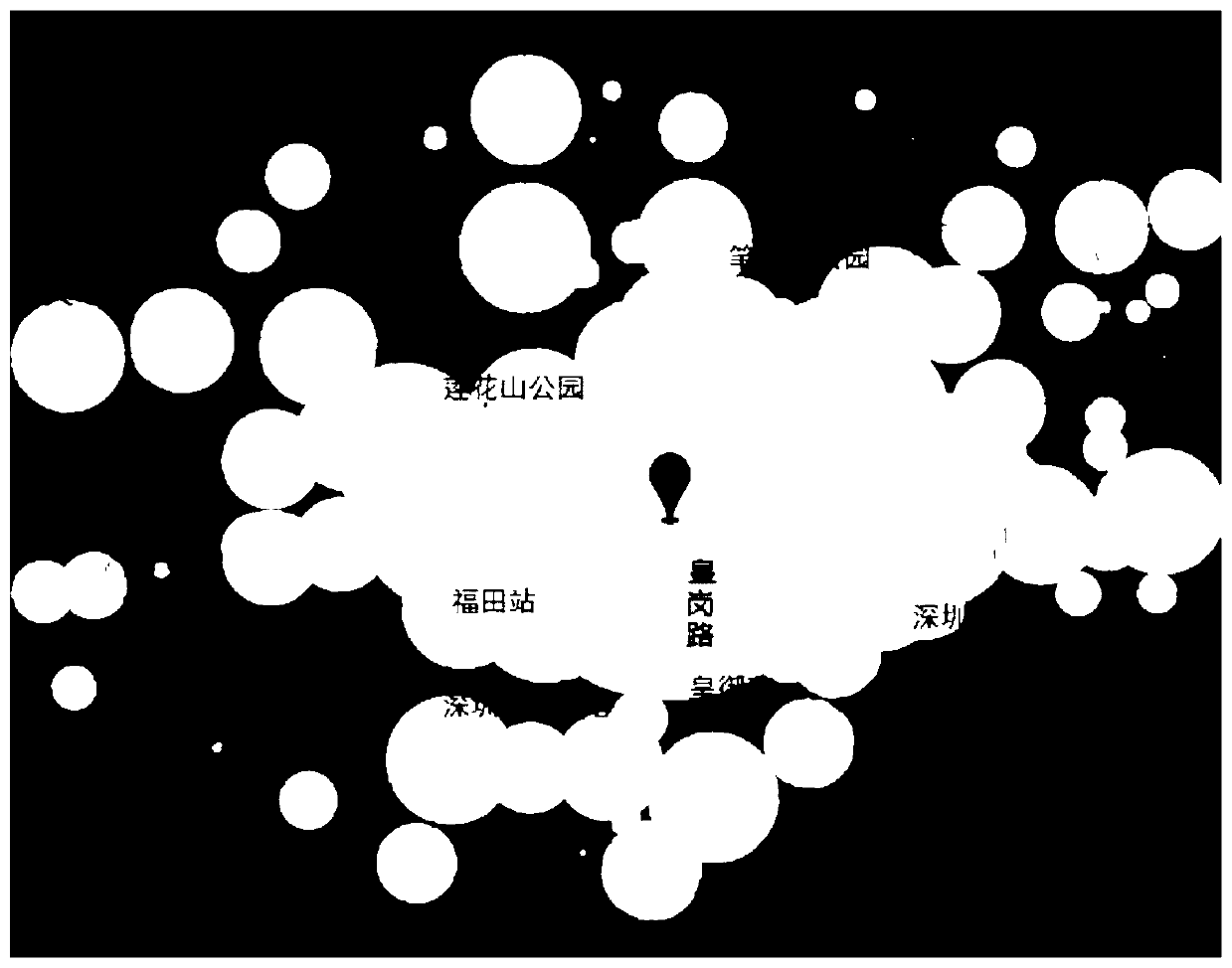Traffic isochrone visualization application method based on business map open data
A technology of open data and application methods, which is applied in data processing applications, special data processing applications, geographic information databases, etc., and can solve problems such as single-destination requirements and poor travel decisions
- Summary
- Abstract
- Description
- Claims
- Application Information
AI Technical Summary
Problems solved by technology
Method used
Image
Examples
Embodiment 1
[0046] Step 1: Obtain the location data of the existing bus stops in the target area from the commercial map open platform, and then clean, deduplicate, and store the location information as key points in the visualization of the traffic isochronous circle to form a list of key points.
[0047] Step 2, count the number of key points, and calculate the commuting time data between all key points under the bus. Store the commute time data as an n*n matrix to construct a commute time matrix. where n is the number of keypoints and the element T in the matrix PiPj Represents the commute time from the i-th key point Pi to the j-th key point Pj under the bus. In step 2, the commuting time data can also be obtained by using the commercial map open platform to obtain the corresponding commuting time data to construct a commuting time matrix.
[0048] Step 3, based on the key points and the corresponding commuting time data obtained in steps 1-2, analyze the data, and calculate the rea...
Embodiment 2
[0069] Step 1: Obtain the location data of the existing bus stops and subway stations in the target area from the commercial map open platform, and then clean, deduplicate, and store the location information as the key points in the visualization of the traffic isochronous circle to form a connection with the bus station. The corresponding key point list 1 and the corresponding key point list 2 corresponding to the subway. And the key point list 1 and the key point list 2 can be combined into a key point list 3 to improve the efficiency of key point acquisition in subsequent calculations.
[0070] Step 2, count the number of key points in the key point list 3, and calculate the commuting time data between all the key points under the bus, the subway, or the bus and the subway. Store the commute time data as an n*n matrix to construct a commute time matrix. where n is the number of keypoints and the element T in the matrix PiPj Represents the commute time from the i-th key po...
PUM
 Login to View More
Login to View More Abstract
Description
Claims
Application Information
 Login to View More
Login to View More - R&D
- Intellectual Property
- Life Sciences
- Materials
- Tech Scout
- Unparalleled Data Quality
- Higher Quality Content
- 60% Fewer Hallucinations
Browse by: Latest US Patents, China's latest patents, Technical Efficacy Thesaurus, Application Domain, Technology Topic, Popular Technical Reports.
© 2025 PatSnap. All rights reserved.Legal|Privacy policy|Modern Slavery Act Transparency Statement|Sitemap|About US| Contact US: help@patsnap.com



